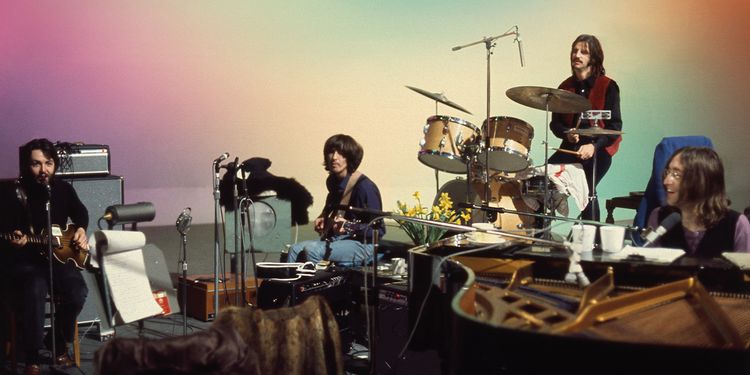Peter Jackson is bringing The Beatles back.
The Disney+ original docuseries, directed by Peter Jackson, will be arriving just in time for the Thanksgiving holiday. Made entirely from never-before-seen, restored footage, it provides the most intimate and honest glimpse into the creative process and relationship between John, Paul, George, and Ringo ever filmed.

Production of the documentary series has employed film restoration techniques developed for Jackson’s They Shall Not Grow Old. Over 55 hours of footage and 140 hours of audio stemming from the original Let It Be film project were made available to Jackson’s team. In reference to the long-reported acrimony surrounding the original Get Back project,
Jackson wrote in a press statement that he was “relieved to discover the reality is very different to the myth … Sure, there’s moments of drama – but none of the discord this project has long been associated with.”
Jackson spent around four years in a darkened suite editing the series. It was created with cooperation from Paul McCartney, Ringo Starr and the widows of John Lennon (Yoko Ono) and George Harrison (Olivia Harrison), as well as music supervisor Giles Martin (son of George Martin and a regular producer of Beatles projects since 2006). In a news release, McCartney said: “I am really happy that Peter has delved into our archives to make a film that shows the truth about the Beatles recording together”, while Starr echoed: “There was hours and hours of us just laughing and playing music, not at all like the Let It Be film that came out [in 1970]. There was a lot of joy and I think Peter will show that.”

The final cut covers 21 days in the studio with the Beatles as they rehearse for a forthcoming album, concert and film project, and climaxes with the full 42-minute rooftop concert. Jackson described the series as “a documentary about a documentary”, as well as a “tougher” one than Let It Be, since it includes controversial events such as Harrison’s brief resignation from the band, which the original film had not covered. With the exception of specific shots where no alternative exists, most of the material that had been featured in Let It Be was not reused in Get Back, and the series primarily used footage captured from alternative camera angles in the case of sequences shared between the two works. According to Jackson, this choice was made out of a desire to “not step on Let It Be’s toes so that it is still a film that has a reason to exist, and our series will be a supplement to it”.
Filmmakers convinced Disney+ to allow for swearing to be included in the documentary series. According to Jackson: “The Beatles are scouse boys and they freely swear but not in an aggressive or sexual way.”

The docuseries showcases The Beatles’ creative process as they attempt to write 14 new songs in preparation for their first live concert in over two years. Faced with a nearly impossible deadline, the strong bonds of friendship shared by the fab four are put to the test. Compiled from nearly 60 hours of unseen footage shot over 21 days, directed by Michael Lindsay-Hogg in 1969, and from more than 150 hours of unheard audio, most of which has been locked in a vault for over half a century. Jackson is the only person in 50 years to have been given access to this Beatles treasure trove, all of which has now been brilliantly restored.

What emerges is an unbelievably intimate portrait of The Beatles, showing how, with their backs against the wall, they could still rely on their friendship, good humor, and creative genius. While plans derail and relationships are put to the test. For the first time in its entirety – The Beatles’ last live performance as a group, the unforgettable rooftop concert on London’s Savile Row, as well as other songs and classic compositions featured on the band’s final two albums, Abbey Road and Let It Be.

The special presentation rolls out over three days, November 25, 26, and 27, 2021, exclusively on Disney+. “The Beatles: Get Back” takes audiences back in time to the band’s January 1969 recording sessions, which became a pivotal moment in music history.
